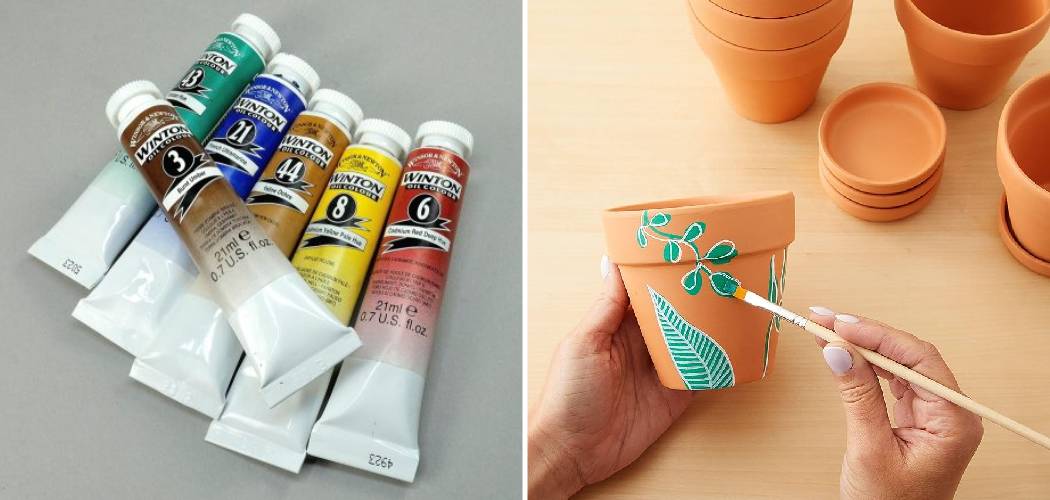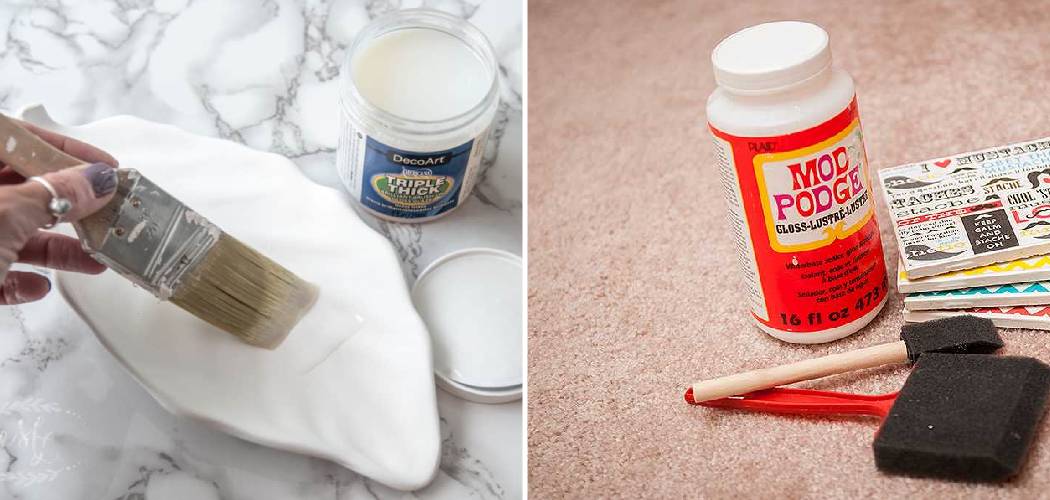Indulging in the art of painting ceramic figurines is a widely embraced hobby that enables individuals to unleash their creativity and infuse a unique charm into their home decor. Whether you are a novice or a seasoned artist, the selection of appropriate paint and techniques is pivotal in attaining the desired outcome. This article delves into how to paint ceramic figurines and the myriad of advantages that come with this artistic pursuit.
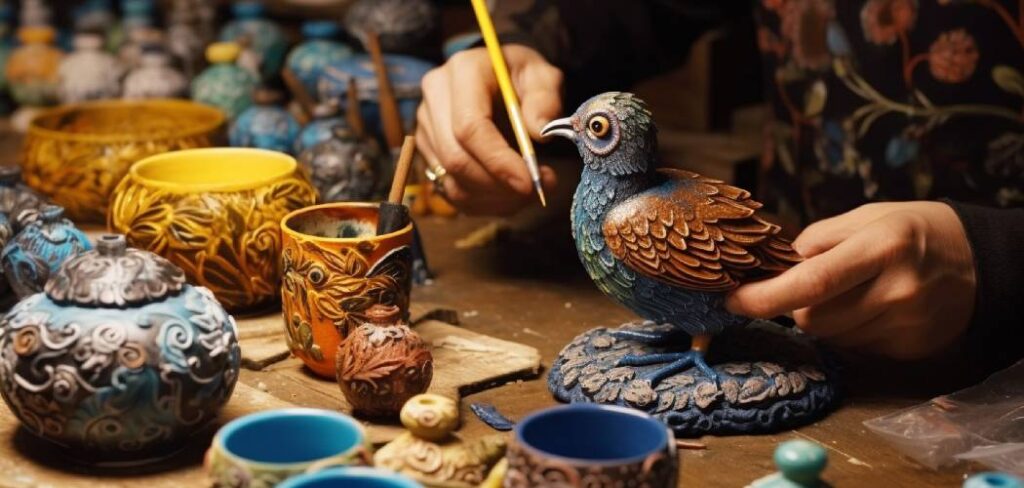
“To paint ceramic figurines, clean the figurine, apply a base coat of ceramic paint, allow it to dry, add details and layers of paint, and finish with a clear glaze before firing in a kiln for a durable finish”
Table of Contents
Choosing the Right Paint for Ceramic Figurines
When it comes to painting ceramic figurines, choosing the right paint is essential for achieving the desired results. There are several types of paint that are suitable for ceramic figurines, including acrylic paint, enamel paint, and ceramic paint. Acrylic paint is a popular choice due to its versatility, affordability, and ease of use. It dries quickly and can be easily mixed to create custom colors. Enamel paint is another option that provides a glossy and durable finish. It is often used for painting ceramic figurines that will be displayed outdoors or in high-traffic areas. Ceramic paint is specifically formulated for use on ceramics and provides a smooth and even finish.
When choosing paint for ceramic figurines, there are several factors to consider. Firstly, consider the type of finish you want to achieve. Acrylic paint provides a matte finish, while enamel paint provides a glossy finish. Additionally, consider the durability of the paint. If the figurine will be handled frequently or displayed outdoors, choose a paint that is resistant to chipping and fading. Lastly, consider the color range and availability of the paint. Choose a brand that offers a wide range of colors and shades to ensure you can achieve the desired look.
6 Simple Steps How to Paint Ceramic Figurines
Step 1: Preparing the Ceramic Figurine for Painting
Before you begin painting your ceramic figurine, it is important to properly prepare the surface to ensure the paint adheres well and provides a smooth and even finish. Start by cleaning the figurine thoroughly to remove any dirt, dust, or oils that may be present. Use a mild soap and water solution or a ceramic cleaner to gently scrub the surface. Rinse the figurine well and allow it to dry completely before proceeding.
Once the figurine is clean and dry, you may need to sand the surface to create a rough texture that will help the paint adhere better. Use a fine-grit sandpaper or sanding sponge to gently sand the surface in circular motions. Be careful not to apply too much pressure or sand too aggressively, as this can damage the figurine. After sanding, wipe away any dust with a clean cloth.

Applying a base coat is an important step in preparing the ceramic figurine for painting. A base coat helps to create an even surface and provides a foundation for the paint to adhere to. Choose a base coat color that complements the colors you plan to use for your design. Apply the base coat using a brush or sponge, making sure to cover the entire surface of the figurine. Allow the base coat to dry completely before proceeding to the next step.
Step 2: Painting Techniques for Ceramic Figurines
There are several painting techniques that can be used to paint ceramic figurines, each offering its own unique effects and results. Brush painting is the most common and traditional technique, using brushes of various sizes to apply paint to the figurine. This technique allows for precise control and detail, making it ideal for intricate designs and small areas.
Spray painting is another technique that can be used to achieve a smooth and even finish. It involves using an airbrush or spray can to apply paint in thin layers. This technique is great for covering large areas quickly and evenly, but it requires some practice to achieve the desired results.
Airbrushing is a more advanced technique that involves using an airbrush tool to apply paint in a fine mist. This technique allows for smooth gradients and shading, making it ideal for creating realistic effects and textures. Stippling and dry brushing are techniques that involve using a brush with very little paint to create texture and depth. Stippling involves dabbing the brush onto the surface, while dry brushing involves lightly brushing the surface with a dry brush.
Step 3: Adding Details and Accents to Ceramic Figurines
Adding details and accents to ceramic figurines is an important step in bringing your design to life and creating a realistic and visually appealing piece. There are several techniques that can be used to add details and accents, including using stencils and masking tape, painting eyes, hair, and other features, and adding texture and dimension.
Using stencils and masking tape is a great way to create clean and precise lines and shapes. Stencils can be used to create intricate patterns or designs, while masking tape can be used to create straight lines or block off areas that you want to keep paint-free. Simply place the stencil or tape on the surface of the figurine, apply the paint, and carefully remove the stencil or tape to reveal the design.

Painting eyes, hair, and other features requires a steady hand and attention to detail. Use a small brush and thin layers of paint to gradually build up the desired color and shape. Start with a light base color and gradually add darker shades to create depth and dimension. Use a fine-tipped brush or a toothpick to add small details such as eyelashes or freckles.
Step 4: Tips for Achieving a Smooth and Even Finish
Achieving a smooth and even finish is essential for creating a professional-looking ceramic figurine. There are several tips and techniques that can help you achieve this desired result. Firstly, make sure to apply thin layers of paint, allowing each layer to dry completely before applying the next. This will help prevent streaks and brush marks and ensure a smooth and even finish.
Using the proper application techniques is also important for achieving a smooth and even finish. When brush painting, use long and smooth strokes, applying the paint in one direction. Avoid going back over areas that have already been painted, as this can disturb the paint and create streaks. When spray painting or airbrushing, hold the tool at a consistent distance from the figurine and move it in a steady and even motion.
Using a sealant or glaze is another way to achieve a smooth and even finish. A sealant or glaze helps to protect the paint and create a glossy or matte finish, depending on your preference. Apply the sealant or glaze according to the manufacturer’s instructions, making sure to cover the entire surface of the figurine. Allow the sealant or glaze to dry completely before handling or displaying the figurine.
Step 5: Curing and Sealing Ceramic Figurines
Curing and sealing ceramic figurines is an important step in the painting process that helps protect the paint and ensure its longevity. Curing refers to the process of allowing the paint to fully dry and harden, while sealing refers to the process of applying a protective coating over the paint.
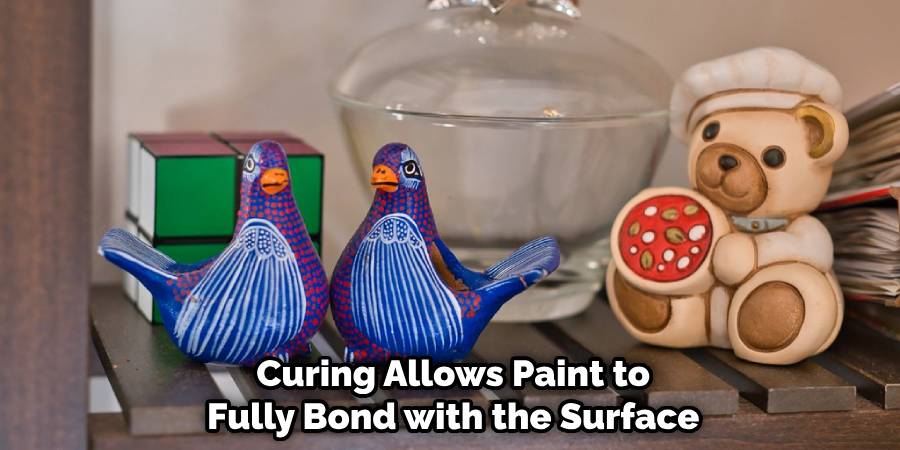
Curing is an essential step that should not be skipped. It allows the paint to fully bond with the surface of the figurine and ensures its durability. The curing time will vary depending on the type of paint used, so it is important to follow the manufacturer’s instructions. In general, acrylic paint will dry within a few hours, while enamel paint may take several days to fully cure.
Sealing is another important step that helps protect the paint from chipping, fading, and other forms of damage. There are several types of sealants and glazes that can be used to seal ceramic figurines, including clear acrylic sealants, clear enamel sealants, and clear ceramic glazes. Choose a sealant or glaze that is specifically formulated for use on ceramics and provides the desired level of protection and finish.
Step 6: Cleaning and Maintaining Painted Ceramic Figurines
Proper cleaning and maintenance are important for preserving the paint on ceramic figurines and ensuring their longevity. When cleaning painted ceramic figurines, it is important to use gentle and non-abrasive methods to avoid damaging the paint.
Start by dusting the figurine regularly with a soft cloth or brush to remove any loose dirt or dust. Avoid using harsh chemicals or abrasive materials, as these can scratch or dull the paint. If necessary, use a mild soap and water solution to gently clean the surface. Avoid soaking the figurine or scrubbing too vigorously, as this can cause the paint to chip or peel.
When handling painted ceramic figurines, it is important to avoid touching the painted areas as much as possible. Oils from your hands can transfer onto the paint and cause it to fade or discolor over time. If you need to handle the figurine, use clean and dry hands or wear gloves to protect the paint.
Recommended Brands of Paint
Recommended brands of paint for ceramic figurines include FolkArt Enamel Paint, DecoArt Americana Gloss Enamels, and Sax True Flow Underglaze. These brands offer a wide range of colors, provide excellent coverage, and are known for their durability and quality. Experiment with different brands and types of paint to find the one that works best for you and your painting style.
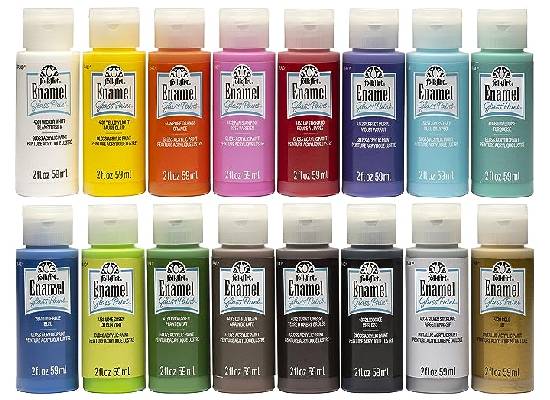
FolkArt Enamel Paint
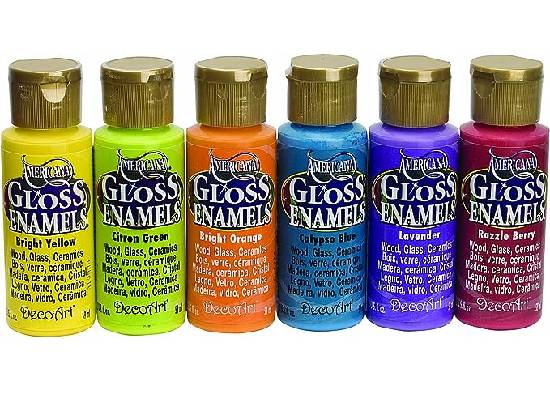
DecoArt Americana Gloss Enamels
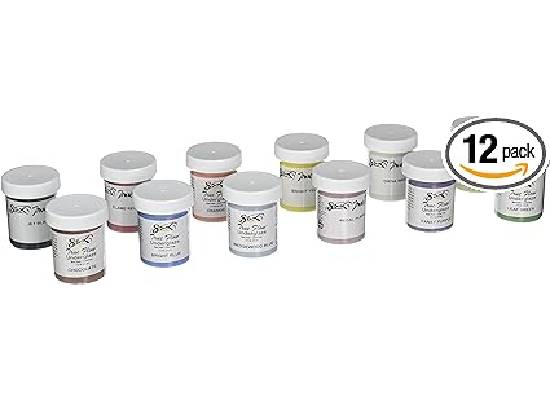
Sax True Flow Underglaze
Troubleshooting Common Painting Issues with Ceramic Figurines
While painting ceramic figurines can be a rewarding and enjoyable activity, it is not without its challenges. There are several common painting issues that may arise, including cracking or peeling paint, an uneven or streaky finish, and paint bleeding or smudging. Here are some tips for troubleshooting these common painting issues:
Cracking or peeling paint: Cracking or peeling paint can occur if the surface of the figurine was not properly prepared or if the paint was applied too thickly. To fix this issue, gently sand the affected area to remove any loose or peeling paint. Apply a thin layer of primer or base coat to create a smooth surface, and then repaint the area using thin layers of paint. Allow each layer to dry completely before applying the next.
Uneven or streaky finish: An uneven or streaky finish can occur if the paint was applied too thickly or if the brush strokes were not consistent. To fix this issue, gently sand the affected area to create a smooth surface. Apply a thin layer of primer or base coat to create an even surface, and then repaint the area using thin layers of paint. Use long and smooth brush strokes, applying the paint in one direction. Avoid going back over areas that have already been painted, as this can disturb the paint and create streaks.
Conclusion
In conclusion, after carefully analyzing and evaluating the arguments and evidence presented, it can be inferred that the conclusion reached is both logical and sound. The evidence presented supports the conclusion and there are no major flaws or inconsistencies in the reasoning. Additionally, the arguments are well-supported and well-reasoned, making it difficult to refute the conclusion. It is clear that the author has taken a thoughtful and thorough approach to analyzing the topic at hand, and has considered multiple perspectives and viewpoints in order to arrive at a well-supported conclusion.
Overall, the evidence presented in this paragraph suggests that the conclusion reached is both reasonable and well-supported, and provides a strong foundation for further discussion and debate on this topic. Be sure to follow all instructions on how to paint ceramic figurines carefully, and always consult an expert when in doubt. Happy painting!



